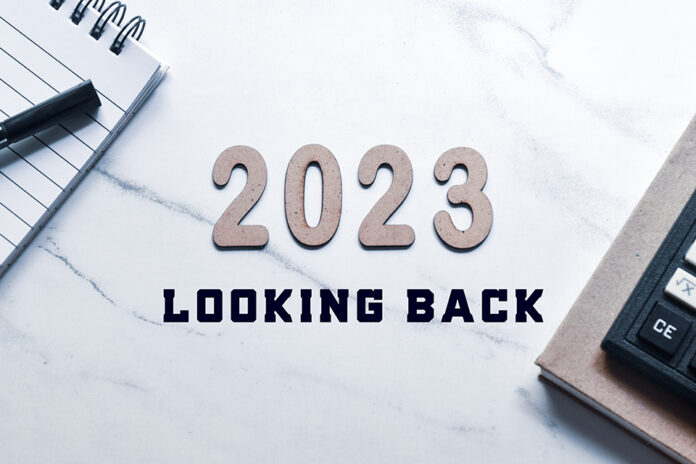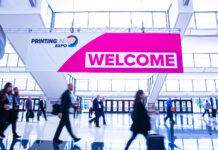It is always important to take stock at the end of the year. Hopefully you’re doing that with your business—considering what worked, what didn’t, and what lessons were learned along the way. When looking at ISA’s advocacy work in 2023, there are plenty of lessons learned this year that will lead to continued success in the coming year.
Here’s what the advocacy wins over the past 365 days have taught me:
Anything of value is worth sticking with for the long haul. Nowhere is this more potent than in the city of Orlando, Florida, where ISA has worked for more than a decade to influence positive change for our industry.
That finally paid off this year, when the county commission allowed electronic message centers throughout its business districts. The code incorporates a number of ISA recommendations along the way.
This is a prime example of working closely with an affiliated association—in this case, the Southern States Sign Association (SSSA)—and member sign companies in the area and then sticking with it despite the delays along the way.
Now sign and graphics companies in the area can sell this type of sign—one which has proven to be an important economic driver for businesses.
Bonus: Attend ISA International Sign Expo 2023 in Orlando (April 10-12 with pre-conference on April 9) and see how the city has begun to incorporate this type of signage, particularly along International Drive, a heavy tourist area and location of the Orange County Convention Center.
Sometimes the most mundane work has the broadest impact. There’s no doubt about it—regulatory work is not the sexiest type of advocacy work. It is bureaucratic and includes many, many meetings over the course of many years.
The International Sign Associatiion had worked with the Society for Experiential Graphic Design (SEGD) over the last few years, influencing two proposals before the International Code Council (ICC).
One would have required sixty-five points of separation in the light reflectance value (LRV) between light and dark colors on signs required by the A117.1 standard. This would have been difficult for a code enforcement official to measure in the field and could be challenging for a sign company to ensure during production of a sign in the shop.
It could have been difficult for a designer to ensure when working with a company’s brand standards too.
“Shell Yellow,” “Toyota Light Grey,” and “Kubota Orange” are just a few corporate colors that would have been prohibited by this proposal—not light enough to contrast with a dark background but also not dark enough to contrast with a light background.
The International Sign Association supports inclusive designs. Signs just aren’t effective if they can’t be read.
But ensuring that standards can be enforced in the field—fairly and not subjectively—is vital to ensuring our good work can continue.
While the codes cycle won’t be final until 2024, it appears that the outcome will be favorable and fair.
Many hands make “light” work. Efforts to restrict sign lighting to unreasonably low levels are increasing across the country not just in localities but also in states and via national standards.
For example, a few years ago, the Illuminating Engineering Society (IES) developed sign lighting levels that were adopted by the American National Standards Institute (ANSI). These new sign lighting levels (RP-39) are at least 45 percent lower than ISA’s typical sign lighting recommendations.
We view RP-39 as an existential threat to our industry, because if communities start requiring such low lighting levels and illuminated signs lose their “pop” at night, end-users may be less inclined to invest in such signs.
That’s why ISA and the Sign Research Foundation (SRF) joined with representatives from the outdoor industry to research and officially critique RP-39, and we are currently working with the IES to revise RP-39 to make it more reasonable and practical.
The International Sign Association also teamed with staff from the California Sign Association to prevent California from adopting language from RP-39 as part of its statewide energy code.
These industry alliances have helped achieve positive outcomes, whereas if we had approached them alone, we may not have been as successful.
Relationships continue to be vital to business success. The groundwork for the Orlando case mentioned earlier began when ISA connected with the city planner at one of our Planning for Sign Code Success™ events. These events bring ISA expertise, SRF guidance, and local planners together to learn how to develop and enforce reasonable sign codes.
In 2023, ISA educated over 400 planners and local officials on sign regulatory issues through four in-person sessions and two webinars. Since 2011, ISA has reached out to more than 9,000 planners.
Often participants in these events will go home and proactively seek ISA and SRF resources out when working on a sign code, because they remember us from a planner workshop or in-person/virtual session.
Celebrate the small wins. Not every sign code win is huge, but for a sign company that has positively influenced sign code in the community which it works (or has received a variance for a particular project), it can mean the difference between an average year and a great one.
For a sign owner who is able to install the type of sign that works best, it may mean one more hire or one more donation to the local Little League. And those are big wins to those who benefit.
We’ve seen small- and medium-sized wins throughout 2023, working at the local level on variances or sign code overhauls.
In Boise, Idaho, for instance, city leaders considered increasing hold times for EMCs from eight seconds to twenty seconds—but only for new signs. That would have created an uneven playing field.
Future iterations of the code changes reduced the hold time to eight seconds—but only for digital billboards, yet another unfairness. ISA worked with the city council to create language that treated all digital signs equally (eight seconds).
In Washington state, another community considered banning all new EMCs, so ISA teamed with the Northwest Sign Council to successfully persuade local officials to allow EMCs in more commercial areas.
Meanwhile ISA’s new variance service has helped sign companies get their end-user clients the signs they need and deserve, which has helped everyone’s bottom line.
While we haven’t won every issue that we’ve worked on, 2023 has been a great year in moving the ball forward as we help communities of all sizes develop reasonable sign regulations.
Here’s to a prosperous 2024, one in which you let ISA know about sign code challenges early and in which we work often together for positive outcomes.
David Hickey is vice president of Government Affairs at ISA.











